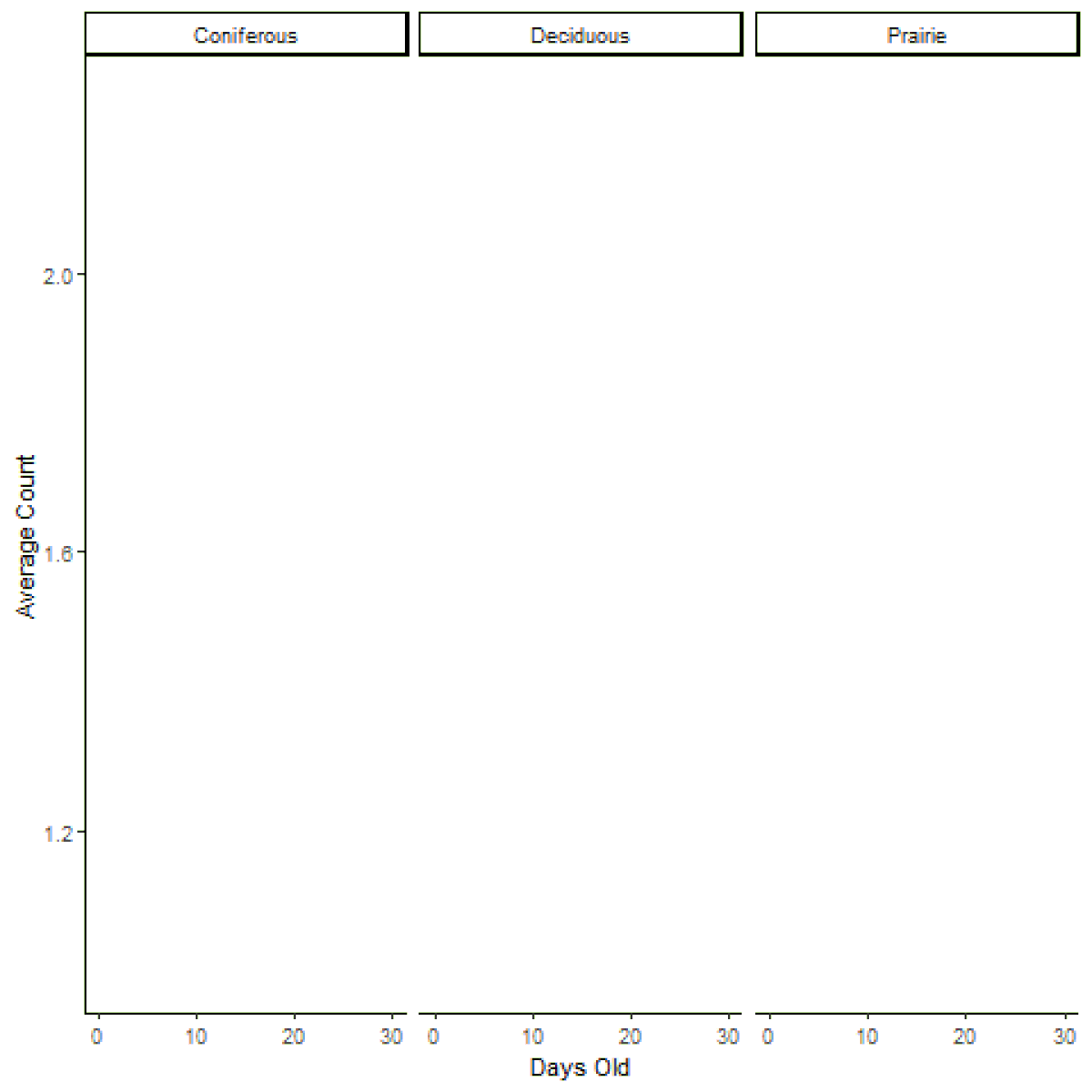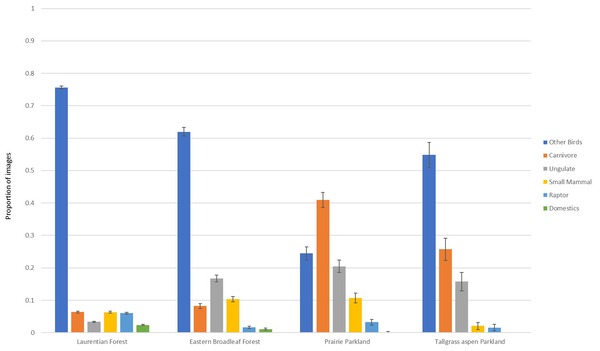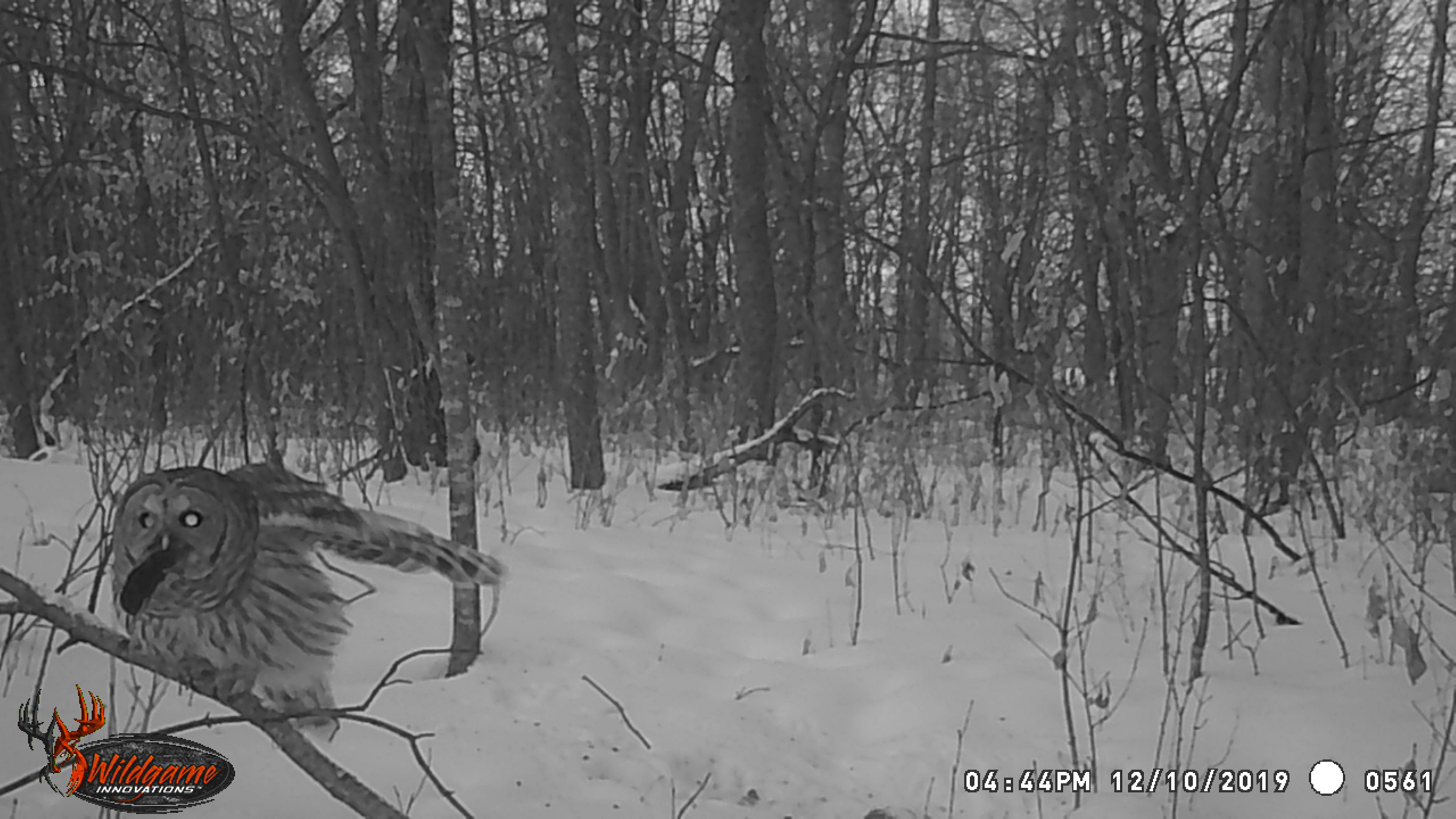2024 Data is ready!!
Results
Results
These results are being shared with hunter volunteers that deployed cameras at their gut piles. We are also sharing them at professional conferences such as the Ecological Society of America Conference that took place in Portland August 6-11, 2023. Additionally, we are preparing peer reviewed publications, one of which will be published in the September issue of Food Webs.
Who:
We have been so lucky to have participation from so many volunteers, both hunters and Zooniverse IDers. More than 200 hunter volunteers have participated from all over the state of Minnesota providing scavenger images from every biome and the Twin cities metro area. We also have more than 7,000 Zooniverse volunteers from all over the world that have helped us identify 60 different offal visitors.
What have we found so far?
Differences in biomes
 | Differences in scavenger occurrence by biome can be seen with many of the scavenger species we observe. Depending on the habitat, the offal resource can be difficult for some scavengers to find and easier for others. For example, raptors, such as eagles and hawks, use eyesight to find food. When the habitat is open, prairies for example, it is easier for raptors to find food faster than it is in more dense habitats (Coniferous areas). Carnivores tend to find food through scent so they typically arrive at gut piles later than birds. We see this consistently across the deciduous and conifer biomes. In the prairie biome, however, we notice that carnivores find the gut piles quickly and continue to visit over the course of one month but at lower numbers when compared to other biomes. (to see the graph more clearly, right click and select 'open image in new window') |
 | Differences in number of scavenger images by biome is another interesting comparison. We find that, for all biomes, except the prairie biome, birds are the most documented scavenger. This is different in the prairie region where we record more carnivore images. Though we see more carnivore images in the prairie region, we see more individual birds than individual carnivores. In addition, we see more carnivores visiting gut piles as groups in the conifer and deciduous biomes. (to see the graph more clearly, right click and select 'open image in new window') |
Scavengers Hunting Scavengers
 | Predators often scavenge for meals, especially when food is scarce. In the fall, for example, deer are typically very healthy. They have gone through a summer fattening up and preparing for winter. As deer get healthier, however, predators, such as wolves, have a harder time catching them. To fill in the lean times, wolves will eat easier-to-catch prey, berries, and offal! Other predators do similar things. But what if you stumble across your main prey at a gut pile that you are scavenging? It makes sense to take advantage of that opportunity! We have recorded several instances where predators (barred owls, bobcats and foxes) are seen feeding on rodents at gut piles. |